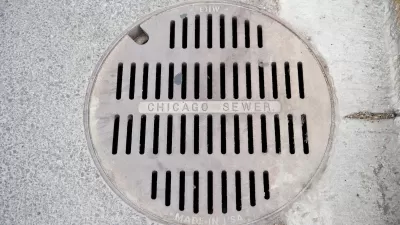The Clean Water Act turns 40 this week. For Mark Gold, this calls for a celebratory overview of the many environmental successes it has produced, as well as careful consideration of the steps needed for it to be effective in years to come.
The Clean Water Act "sets wastewater standards and regulates the discharge of pollutants into the nation's oceans, rivers and lakes", says Mark Gold, former president of Heal the Bay and associate director of UCLA's Institute of The Environment and Sustainability, in a recent editorial piece published in the Los Angeles Times. Yet, "without a more comprehensive federal approach to water management, the nation's aquifers, rivers, lakes and coastal waters will continue to degrade."
According to Gold, the Clean Water Act has been responsible for a myriad of successes locally in Los Angeles County, as well as nationally, in no small part due to collaboration amongst diverse stakeholders from both the public and private sectors. He asserts, however, that although the act has led to cleaner, safer and healthier beaches for aquatic life, swimmers and surfers, it still has a long way to go before achieving what Congress envisioned 40 years back.
Gold points to the fact that the act cannot create "universally fishable, swimmable and drinkable waters," as Congress initially foresaw. He adds that pollution from agriculture, mining and timber industries, as well as from septic systems are largely unregulated, and that storm-water management also needs to be strengthened.
Some of these improvements require minor revisions to the existing rules mandated in the Act, but others require congressional action and bipartisan support. Gold challenges Congressional representatives to listen to Americans' concerns about water quality, and to work harder to meet the act's initial aspirations.
FULL STORY: Refreshing the Clean Water Act

Planetizen Federal Action Tracker
A weekly monitor of how Trump’s orders and actions are impacting planners and planning in America.

Map: Where Senate Republicans Want to Sell Your Public Lands
For public land advocates, the Senate Republicans’ proposal to sell millions of acres of public land in the West is “the biggest fight of their careers.”

Restaurant Patios Were a Pandemic Win — Why Were They so Hard to Keep?
Social distancing requirements and changes in travel patterns prompted cities to pilot new uses for street and sidewalk space. Then it got complicated.

Platform Pilsner: Vancouver Transit Agency Releases... a Beer?
TransLink will receive a portion of every sale of the four-pack.

Toronto Weighs Cheaper Transit, Parking Hikes for Major Events
Special event rates would take effect during large festivals, sports games and concerts to ‘discourage driving, manage congestion and free up space for transit.”

Berlin to Consider Car-Free Zone Larger Than Manhattan
The area bound by the 22-mile Ringbahn would still allow 12 uses of a private automobile per year per person, and several other exemptions.
Urban Design for Planners 1: Software Tools
This six-course series explores essential urban design concepts using open source software and equips planners with the tools they need to participate fully in the urban design process.
Planning for Universal Design
Learn the tools for implementing Universal Design in planning regulations.
Heyer Gruel & Associates PA
JM Goldson LLC
Custer County Colorado
City of Camden Redevelopment Agency
City of Astoria
Transportation Research & Education Center (TREC) at Portland State University
Camden Redevelopment Agency
City of Claremont
Municipality of Princeton (NJ)





























